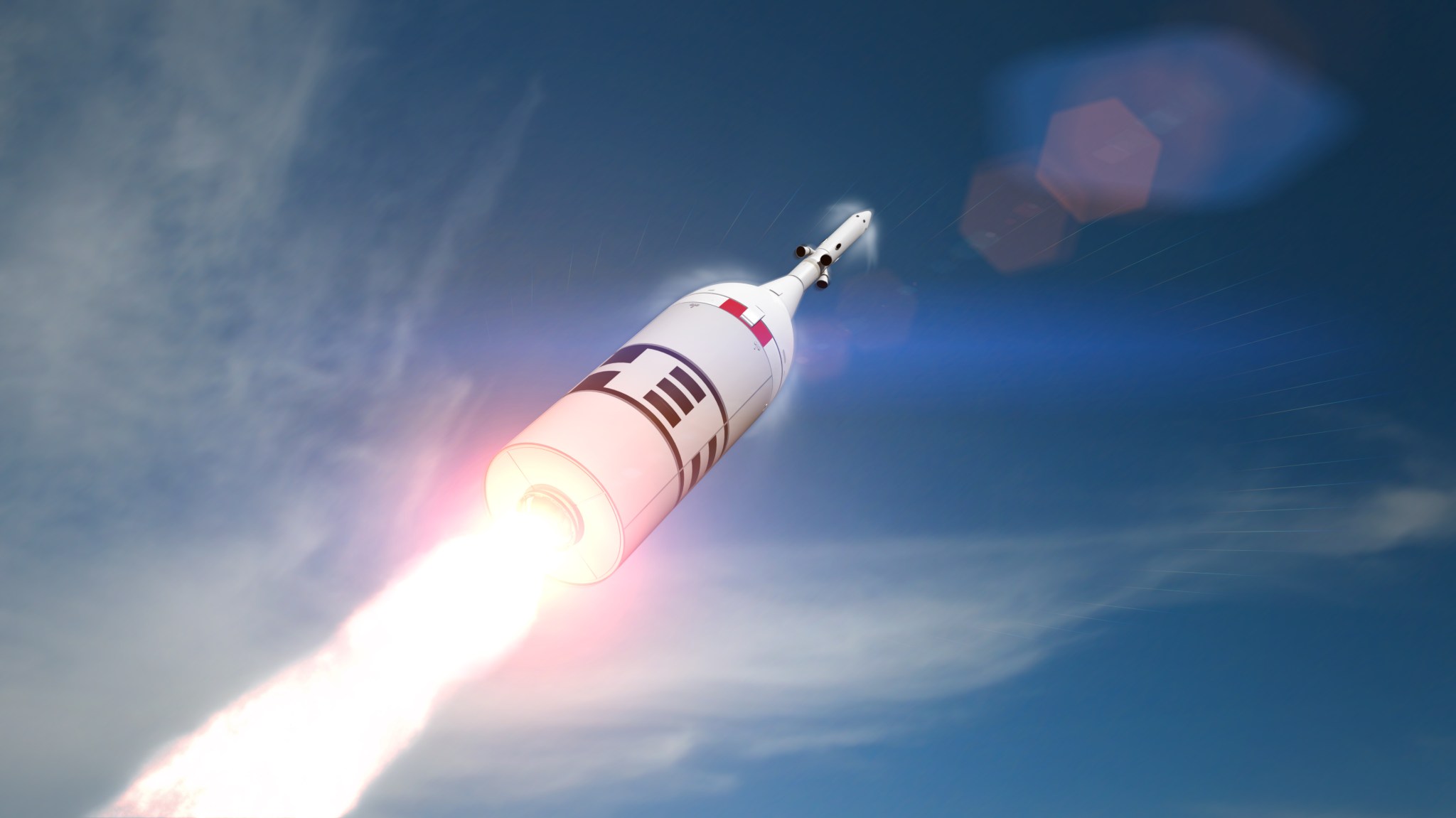NASA’s Orion spacecraft is scheduled to undergo a design test in July 2019 of the capsule’s launch abort system (LAS), which is a rocket-powered tower on top of the crew module built to very quickly get astronauts safely away from their launch vehicle if there is a problem during ascent.
This full-stress test of the LAS, called Ascent Abort Test 2 (AA-2), will see a booster, provided by Northrup Grumman, launch from Cape Canaveral Air Force Station in Florida, carrying a fully functional LAS and a 22,000 pound Orion test vehicle to an altitude of 31,000 feet at Mach 1.3 (over 1,000 mph). At that point, the LAS’ powerful reverse-flow abort motor will fire, carrying the Orion test vehicle away from the missile. Timing is crucial as the abort events must match the abort timing requirements of the Orion spacecraft to the millisecond in order for the flight test data to be valid.
The test will provide engineers with critical abort test data to help validate computer models of the spacecraft’s LAS performance and system functions.
“This will be the only time we test a fully active launch abort system during ascent before we fly crew, so verifying that it works as predicted, in the event of an emergency, is a critical step before we put astronauts on board,” said Don Reed, manager of the Orion Program’s Flight Test Management Office at NASA’s Johnson Space Center in Houston. “No matter what approach you take, having to move a 22,000-pound spacecraft away quickly from a catastrophic event, like a potential rocket failure, is extremely challenging.”
The test will verify the LAS can steer the crew module and astronauts inside to safety in the event of an issue with a Space Launch System rocket when the spacecraft is under the highest aerodynamic loads it will experience during a rapid climb into or beyond orbit for deep-space missions.
The LAS is divided into two parts: the fairing assembly, which is a shell composed of a lightweight composite material that protects the capsule from the heat, wind and acoustics of the launch, ascent, and abort environments; and the launch abort tower, which includes the system’s three motors. In an emergency, those three motors – the launch abort, attitude control, and jettison motors – would work together to pull Orion away from a problem on the launch pad or during SLS first stage ascent, steering and re-orienting for LAS jettison, and pulling the LAS away from the crew module. During a normal launch, only the LAS jettison motor would fire, once Orion and the Space Launch System clear most of the atmosphere, to clear the LAS from Orion and allow the spacecraft to continue with its mission.
Engineers at several NASA centers built the Orion test article that has many of the design features and the same mass as the capsule that will carry crew. Because the test is designed to evaluate Orion’s launch abort capabilities, the crew module used for AA-2 will not deploy parachutes after the abort system is jettisoned, nor will it have a reaction control system with thrusters needed to help orient the capsule for a parachute-assisted descent and splashdown after the LAS is jettisoned. Those systems have been rigorously evaluated as part of other testing. NASA was able to accelerate the test schedule to better inform the Exploration Mission-2 flight and lower costs by simplifying the test article and eliminating parachutes and related systems, and not recovering the capsule from the ocean.
In 2010, an earlier version of Orion’s LAS was tested to evaluate the performance of the system in during Abort Test Booster-1 at the White Sands Missile Range in New Mexico. For Exploration Mission-1, NASA’s first integrated flight test of Orion atop the powerful SLS, the abort system will not be fully active since astronauts will not be inside the spacecraft.
NASA Johnson was responsible for producing the fully assembled and integrated crew module and separation ring, including development of unique avionics, power, software and data collection subsystems and several elements of ground support equipment.
The agency’s Langley Research Center in Hampton, Virginia, built the primary structure of the crew module test article and a separation ring that connects the test capsule to the booster and provides space and volume for separation mechanisms and instrumentation.
Critical sensors and instruments used to gather data during the test were provided by NASA’s Armstrong Flight Research Center in Edwards, California. NASA’s Kennedy Space Center in Florida is processing the vehicle before launch.
NASA’s prime contractor, Lockheed Martin, is providing the fully functional Orion LAS, and the crew module to service module umbilical and flight design retention and release mechanisms.

























